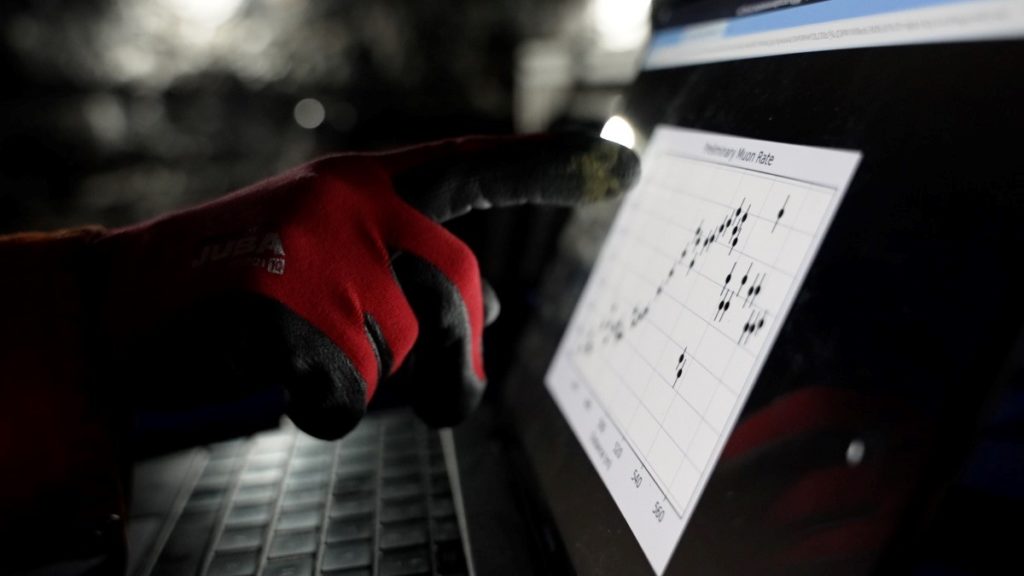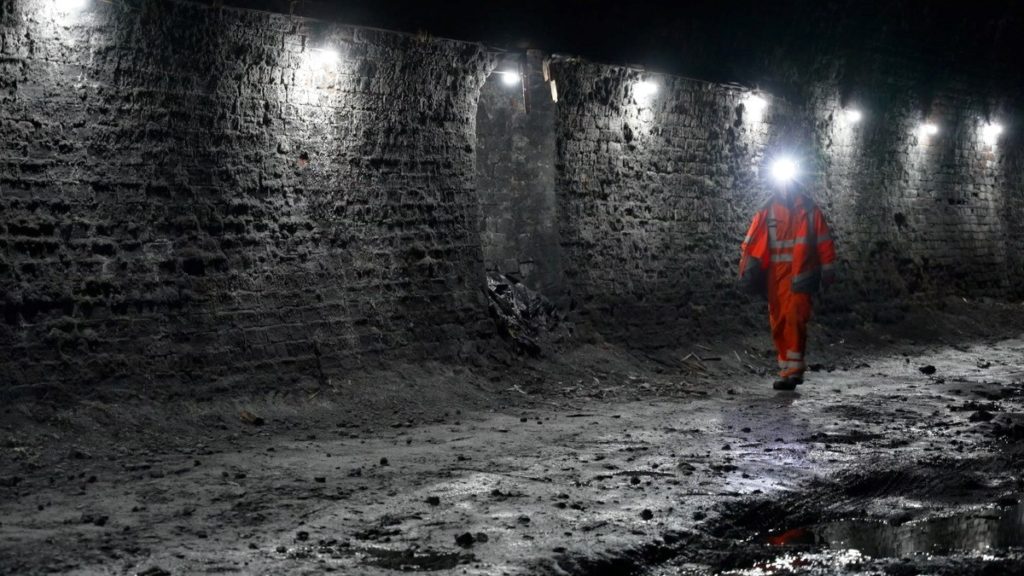Constructed in 1896, Balgray Tunnel lies under the busy Kelvinside area of Glasgow, in the city’s West End. Built to carry the Lanarkshire and Dunbartonshire Railway through Balgray Hill, it is now all but abandoned.
The tunnel is one of more than 3,000 former railway structures maintained by National Highways Historical Railways Estate (HRE) on behalf of owners, the Department for Transport.
Though the tunnel has been closed since 1964, it still requires regular inspections to ensure it remains safe and in good order, and until now techniques such as ground penetrating radar, drilling and visual inspections have been used to check for hidden shafts and highlight potential issues.
This year, however, National Highways, working together with infrastructure investigation firm Geoptic, employed an innovative technique to better understand the tunnel and unveil its hidden secrets.
Cosmic rays
Geoptic is a specialist in ‘muon tomography’ and offers its services to the civil engineering sector.
“We’re a spin out company from the University of Sheffield, the University of Durham, and St Mary’s University, Twickenham,” says Professor Lee Thompson, the company’s technical director. “Our core business is in the field of muon tomography. As physicists we have the background and the understanding to build the appropriate instrumentation and the ability to interpret the data that comes back.”



Muon tomography is based on the measurement of harmless background radiation and its use allows Geoptic to see through hundreds of metres of soil and rock, or equivalent materials such as concrete.
“The best way to describe it is using the analogy of a medical X-Ray,” says Lee. “The reason we have X-rays is to enable us to look inside an object without having to open it up. They’re totally non-invasive and non-destructive.”
Muons are nature’s X-rays. They’re high energy particles, created indirectly as decay products of collisions of cosmic rays with particles of the Earth’s atmosphere. They are highly penetrating, travelling to the Earth’s surface from space and passing through man-made and natural structures. Around 10,000 cosmic ray muons pass through each square metre of ground every minute.
When detectors are placed below an object of interest, you can measure how many muons are absorbed as they pass through the area. This information can be used to build up an image of the object including any previously hidden attributes. Muon tomography is therefore extremely useful in imaging the interior of large engineering structures.
The technology is not especially new. It was used in 1971 to look for hidden chambers in pyramids, a more recent survey in 2017 led to the discovery of secret chambers and rooms in the Great Pyramid at Giza – unseen since the Pyramid was built over 4500 years ago. The biggest discovery was a 100-feet-long void above the grand gallery.
Muon radiography has also been used to scan volcanoes, including Honshu in Japan and Italy’s Mount Vesuvius, and was even employed to image the highly radioactive Fukushima nuclear reactor complex after the 2011 earthquake.
Geoptic, however, has now adapted the process for use in railway tunnels and the Balgray survey is the first time the technology has been used on an HRE tunnel.
Why Balgray?
Over the years, HRE has gathered extensive data on Balgray Tunnel and how it was constructed. However, employing muon tomography should help the organisation confirm its own information, specifically around the location of blind shafts along the route of the 650-metre tunnel.
During the Victorian era, engineers constructed shafts along the line of a tunnel to speed up the construction process and help maintain the tunnel’s alignment; particularly on curves. When a tunnel was completed some of the shafts would be kept for ventilation and others capped at both ends or back-filled and assumed stable. Being able to locate and survey hidden closed shafts and other voids in the structure is important for maintenance and safety of the tunnel.
In addition, since the tunnel was constructed over 100 years ago, the landscape above it has changed significantly, so it’s important that HRE has the most up to date information to maintain the structure.
“We chose Balgray tunnel because it’s a tunnel that we’ve got quite a lot of background information on already,” said Colin McNicol from HRE. “We’ve carried out ground penetrating radar surveys, and microgravity surveys at the surface, as well. We know there are blind shafts in Balgray and we’ve got a good idea as to where they are. In conversation with Geoptic we chose to carry out a survey in Balgray so that they could effectively benchmark their equipment against the results that we’ve already got.”
Why muons?
Muon tomography offers practical benefits and advantages over other scanning techniques.
“There are challenges to identifying hidden voids,” says Lee. “Other surveying techniques such as ground penetrating radar, drilling, and visual inspections, have been used to check for hidden shafts and highlight potential issues in the past – although these can be invasive and some come with associated health and safety hazards such as working from height on scaffolding. In contrast Geoptic’s innovative instrumentation doesn’t require any contact with the tunnel lining.
“Working at Balgray was a different experience to similar surveys that Geoptic has performed for Network Rail. The fact that Balgray is a disused railway tunnel enabled the team to perform the surveys during the day whereas Geoptic’s recent survey work on Network Rail’s Wales and Western region naturally experienced the time constraints that come with limiting access to the tracks to overnight line blocks or possessions. Similarly, for Network Rail surveys we deploy our equipment on pairs of link trolleys and roll it along the track, in the case of Balgray Geoptic was able to modify its equipment so that it was sat inside the back of a pickup truck, which made access a lot easier – we just drove the truck into the tunnel.
“Before the survey started, we developed a digital twin of the tunnel using detailed geological data which informed us how many muons we expected to see at any point in the tunnel. Then, inside the tunnel, we used our instruments to measure the number of muons at different points.
“Differences between what we expect to see and what we actually observe can be interpreted as differences in density in the structure of the tunnel compared with that we assumed in our digital twin. As well as identifying hidden voids and shafts our instruments can return valuable information on the shaft position, size, and extent.”
Results
The results of the survey are currently being assessed to see if future works will be planned. After more than two weeks of surveying, Geoptic now has 500 data sets to crunch, and it’s too early to discuss the outcome of the survey in depth. However, Lee and Colin are confident that the trial will yield positive results.
“I’m sure when we get the analysis back, it’ll be another ringing endorsement for Muon Tomography as a useful piece of technology for surveying and identifying anomalies,” says Colin.
The potential applications of Muon tomography are huge, particularly for HRE. Inspections of historic railway tunnels are a key part of HRE’s maintenance routine and if the Balgray Tunnel trial is successful it could use the technology in other surveys. Similarly, if the trial is successful the technology will certainly have applications on the UK rail network.
“We were delighted to work with National Highways to provide the first HRE muon tunnel survey and we hope this is a collaboration we will be able to continue in the future,” said Lee.

